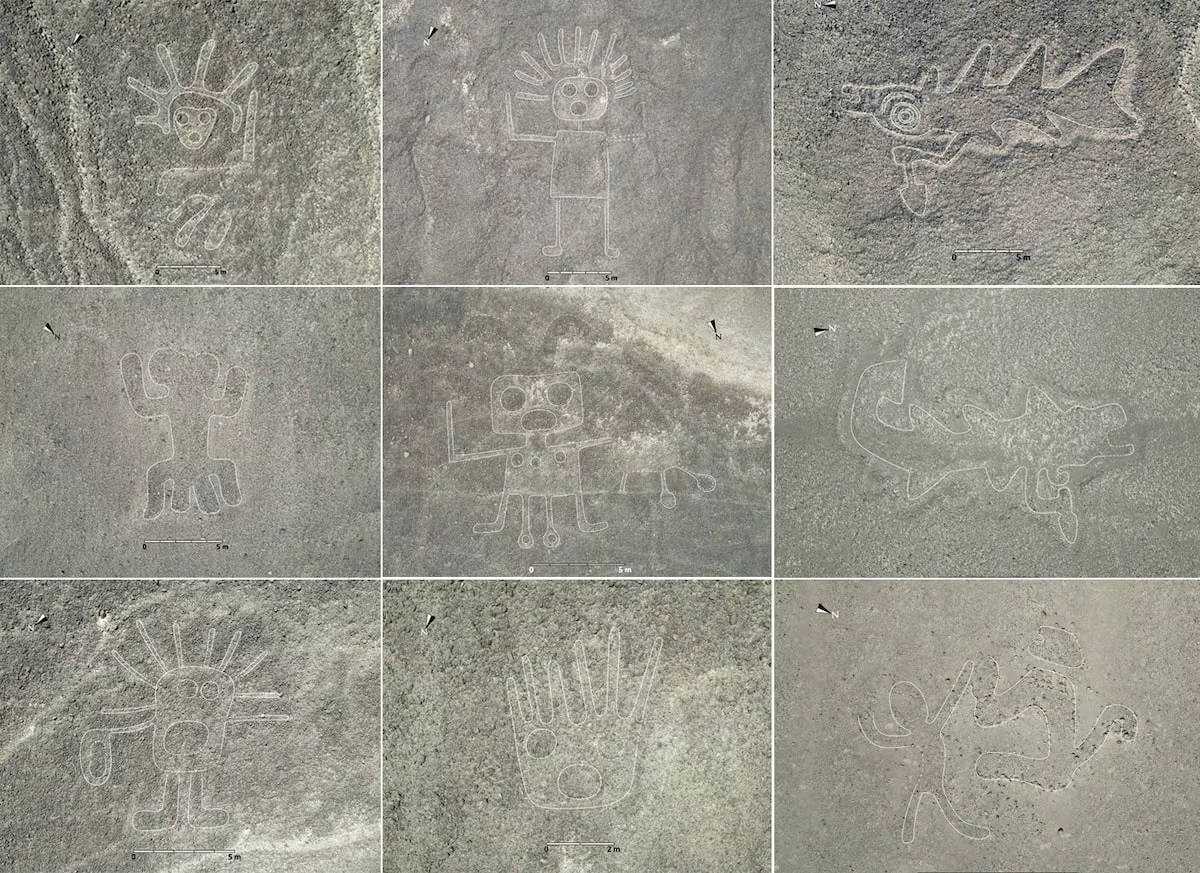Researchers from Yamagata University in Japan have identified 303 new geoglyphs in the Nazca Desert in southern Peru, using artificial intelligence (AI) technology.
The findings were published in the Proceedings of the National Academy of Sciences in the United States. It represents a significant advancement in the study of the UNESCO World Heritage site of ancient Nazca Lines. These newly discovered geoglyphs are smaller in size compared to previously known figures and provide new insights into the purpose of these ancient markings.
The research was conducted in collaboration with IBM Research and utilised AI to analyse aerial photographs and identify potential geoglyph locations. Field surveys carried out between September 2022 and February 2023 confirmed the existence of the new geoglyphs, representing a considerable improvement in the efficiency of discovering these ancient features. In contrast to the traditional method of visual identification, which can be time-consuming, the AI system dramatically reduced the time required for analysis.
This discovery builds on the work of Japanese archaeologists, who have been studying the Nazca Lines for decades. Since 2004, 318 geoglyphs have already been found, primarily through the use of high-resolution satellite imagery. The new AI-assisted method allowed researchers to identify nearly as many geoglyphs in a few months as have been discovered over the past century.
The newly identified geoglyphs are generally smaller, averaging around 9 metres in length. They depict human figures, human heads, and animals such as livestock. These smaller geoglyphs were often found near small paths, suggesting they were created by individuals or small groups for purposes of information sharing and ritual practices. In contrast, larger geoglyphs, some spanning up to 90 metres, were discovered near pilgrimage routes to temples and are believed to have been part of community-level rituals.
Masato Sakai, a professor of cultural anthropology and Andean archaeology at Yamagata University, who led the research team, explained that the geoglyphs likely served as a means of communication in a society that had no written language, “The human heads depict human sacrifices (to the gods). People at that time learned the roles of human sacrifice and livestock by looking at them while walking.”
The research team believes that these geoglyphs, many of which are more than 2,000 years old, were used by ancient people to share information about their rituals and way of life. The larger geoglyphs, such as the well-known hummingbird and orca holding a knife, may have served as ritual spaces or symbols of animal deities.
In addition to providing new insights into the purpose of the Nazca Lines, the research team hopes that this discovery will lead to greater conservation efforts in the region. Professor Sakai has suggested that the area could be designated as a park to protect these invaluable cultural heritage sites from further degradation. By preserving the geoglyphs, future generations will be able to learn from these remarkable remnants of a long-lost civilisation.
The application of AI technology in archaeology, as demonstrated by this discovery, has proven invaluable in accelerating the identification of ancient sites. While many of the geoglyphs have been eroded by the passage of time, the use of artificial intelligence has allowed researchers to uncover these hidden treasures in a fraction of the time that traditional methods would have taken.
